St Lucia Day
Celebrated December 13th
Have you ever heard of St Lucia of Syracuse? She was a young martyr who lived in the 4th century in Italy and is celebrated in many Scandinavian countries on her feast day, December 13th. Each year on her feast day, children dress up in all white, wear a crown of candles and bake St Lucia buns to share with their loved ones and friends. Many churches also host a St Lucia Procession where both boys and girls process while singing a hymn to St Lucia. She is a wonderful saint, especially for children to look to because of her acts of mercy to the poor and her boldness and bravery as she faced persecution and eventually martyrdom for the sake of Christ.
In this guide you will find more about the many Scandinavian traditions surrounding this feast, the story of her life and martyrdom, and additional resources to help you create feast day traditions with your families for years to come!
Scroll down for more suggestions on how to celebrate this feast with your family!
Icon Source: Uncut Mountain
Who is St Lucia? St Lucia of Syracuse was born in Italy in 285 AD. Her father died while she was still young so her mother raised her in faith and piety, as she was a Christian. Her family was part of the nobility of Sicily. As a teenager she dedicated her virginity to God and her life to service of the poor. She was known around the city for her kindness and giving-nature. The people said light shone from her eyes.
However, in 303 AD the emperor of Rome issued an edict against the Christians in an attempt to prevent the faith from spreading in Italy. Churches were burned, priests were killed or sold into slavery, and any Christian villages and villagers were to be burned. Because of Lucia's noble status, she was protected. Other Christians went into hiding in the catacombs, the underground catacombs (like graveyards) which lay beneath cities all over Italy. Lucia would bring food and water to those who were forced to live in the catacombs of Syracuse. In order to free up her hands to carry the supplies, she wove a wreath for her head with candles to light her way in the tunnels.
Eventually, she was caught, and even her noble lineage could not save her. In one famous story, the guards attempted to move her and by the power of the Lord, she was too heavy to be moved. They tried and tried but nothing could move her. Nothing could convince Lucia to betray her Lord. She was publicly tried, her light-filled eyes gouged, and she was burned at the stake but the fire did not consume her. Finally, she was killed by a sword and gave up her spirit on December 13th, 304 AD.
If she was born in Italy, why is she considered the Patron Saint of Sweden? It is said that St Lucia saved Sweden from a terrible famine back in the middle ages. On the darkest day of the most terrible winter of all, they saw a boat sailing towards them across Lake Vannern. There stood a beautiful maiden, dressed all in white and glowing with an unearthly light. When the boat reached the shore. St Lucia handed out huge sacks of wheat to all the people until the boat was empty. The people would have bread to eat all winter long. To this day, people all over the world bake sweat breads on her feast day to share with others in remembrance of St Lucia.
You can read more about her life HERE. I also recommend this story book called Lucia Saint of Light by Ancient Faith Publishing, as a great introduction to the life of St Lucia and the surrounding traditions associated with her feast day.
5 Ways to celebrate St Lucia Day:
1. Attend a Church Service
As I often say, the best way to celebrate a feast day of any saint is by attending a Divine Liturgy (as you are able). This is an important way to connect our lives at home with our lives in the church, and it is a beautiful way to honor St Lucia.
2. Read the story of the life of Saint Lucia of Syracuse
One of my favorite ways to teach my kids about a Saint is by reading the story of their life. Thankfully there is a great book available for St Lucia (I’ll share below) which shares both the traditions surrounding her feast and the true story of her life. Also available on Amazon if you need it in a pinch (Affliate link).
Lucia: Saint of Light Book by Katherine Bolger Hyde
My all time favorite book for this feast, and the one we read every year is Lucia: Saint of Light by Ancient Faith Store! Reading this story together, I see my daughters’ eyes light up! They noticed that the girls were dressed in all white with a red sash, just like they were, and they baked St Lucia buns, just like we did! The story includes both the local traditions of St Lucia as practiced in Sweden along with the true story of her life and martyrdom. In addition to a great book, it also is a great resource too! It has a recipe for Lussekatter (St Lucia Buns), the traditional St Lucia song, and an icon and brief story of her life at the end of the book. It really is a fantastic book and resource, and I’m happy to share it with you!
You can purchase it at Ancient Faith bookstore here. You can also listen to an audio recording of this story read by Dr. Chrissi Hart, from Under the Grapevine, here.
Additional Books:
My Synaxarion December by Potamitis Publishing - Features St Lucia on December 13th
Lucia Morning in Sweden - Available on Amazon (Affiliate link), also shares the story of St Lucia and the traditions surrounding her feast day.
101 Orthodox Saints by Ancient Faith Publishing- This fantastic book features St Lucia on page 71!
Women of Faith by Xist Publishing - Available on Amazon (Affiliate link), features St Lucy as the final saint in the book of wonderful and heroic female saints.
Check out this brand new video of the story of St Lucia just published by Ancient Faith Kids on YouTube:
3. Follow the Traditions on St Lucia Day
St. Lucia Day is celebrated on December 13th around the world, and she is especially popular in many Scandinavian countries. I want to share some traditions that stem from this part of the world, specifically. Feel free to use and adapt them to your own families!
Scandinavian Tradition:
Typically the oldest daughter of the family rises just before dawn and dresses in a white gown with a red sash, which symbolizes St Lucia’s purity and her martyrdom. On her head she places a crown of lingonberry twigs and leaves in which candles are set, in memory of the candles St Lucia wore when she visited prisoners in the catacombs. She is now dressed as the “St Lucia bride” or the “Queen of lights”. Fresh coffee and Lussekatter, (or St Lucia Buns) are then prepared, which the oldest will take to her parents in bed (I can really get behind this tradition as my kids get older!) These buns are traditionally saffron-flavoured, yeast-raised sweet buns formed in the shape of an “S” or a cross. Her attendants (or other girls) also wear long white dresses and a red sash. Boys are also attendants, and wear white as well!
Symbolism:
So why do girls wear white on St Lucia Day? Because St Lucia was the bride of Christ and it represents her purity, as she was a virgin martyr. And the red sash is a symbol of her martyrdom. A crown is worn on the young girl’s heads with candles for 2 reasons: (1) It is said that St Lucia used to visit Christians hiding in the catacombs and in order to keep her hands free to carry the food she brought them, she wore candles on her head. (2) the name Lucia means "light” and her feast day falls on the darkest part of winter. In Sweden, the winter nights are very long with only a few hours of daylight, so St Lucia came to be associated with the return of the light. The St Lucia buns are also symbolize the wheat she brought in the famine and they are shaped like a cross because she was martyred for Christ!
Check out this Printable for St Lucia
How to put together an outfit for St Lucia Day:
Girls traditionally wear an all-white long dress with a red ribbon around the waist. Then, the oldest girl in the house wears the St Lucia crown. The attendants usually wear a greenery wreath around their head and hold a candle, and help pass our St Lucia buns (Lussekatter).
Outfit Elements:
White Gown
Red Sash around the waist
Greenery head wreath
A candle to hold
(optional) serving tray for Lussekatter and coffee
Check out my Amazon Storefront for outfit suggestions for St Lucia
Boys: Boys can also participate in St Lucia. Boys will also dress in white dress shirts and tan pants, and usually have a star fan (think: long stick with a large star on top) and in some places they were a pointed hat with star on it (see example below). They also sometimes wear a white cone-shaped hat with stars on it, very similar to a wizard’s hat. They are often called Star Boys, which is a representation of St Stephen the Protomartyr, but seeing as St Herman of Alaska is also celebrated on the same day, sometimes referred to “The North Star”, I see this as a cool connection!
St Lucia Crown: Here are some options for either making or buying crowns.
Heirloom Brass Candle Light Crown (above)- by Heirloom Mart Co
Heirloom Plastic Candle Light Crown (above)- By Heirloom Mart Co
Garland Style Crowns from Amazon (Affiliate Links)
Create your own: There are so many ways to make your own St Lucia Crown, so here are some ideas :
Star Boy Hats: You can easily make the hats out of white poster board and star cutouts. Click here for an example to create your own! For purchase: I also found a pre-made felt hat from etsy here.
Procession:
The traditional "St. Lucia Procession" originated in Sweden, and is practiced in homes, churches, and communities there. In Norway, children bring the procession to nursing homes and hospitals, serving lussekatt buns to the elderly. Scandinavian immigrants have brought the celebration to the U.S. - look for Swedish Christmas Fairs and some Orthodox Churches (that is how I saw my first procession at our home parish in California!) During a procession, the attendants also carry a single candle with them while singing the hymn of St Lucia. We have typically used candles we get from church, but you can also find an electric candle here. You can watch a video of a procession on YouTube here.
Lussekatter or St Lucia Buns :
Another fun tradition associated with St Lucia Day is making sweet buns which are baked with saffron. They are shaped in an “s” shape and decorated with raisins. They are called Lassekatter which means “cat tail”. In connection with the story, these buns symbolize the wheat that St Lucia brought in the famine. In her honor, we prepare baked goods to give away to others. This is a picture of the ones that I baked this year. I used this recipe for a saffron version, and substituted dried cranberries instead of raisins. I’ve made these each year and truthfully they don’t usually turn out this well. In this particular recipe, there is less sugar and fat, and as explained in the recipe, when either of those are overused, it can contribute to making yeasted breads rather dense. I’ve made many many Lucia buns in the past that were dense, but these were completely the opposite! They were light, fluffy, and perfectly sweet! I’ll definitely use this recipe going forward!
You can find the recipe for St Lucia buns from Simply Recipes here. Or if you need a Vegan version, click here!
St Lucia Crown Cake: Another alternative to St Lucia buns is the St. Lucia crown cake, which is usually a round coffee cake with candles placed in a circe on it, much like her crown. Of course this is non-lenten recipe, for the non-fasting ones! You can find a recipe for it here. In the past we have made St Lucia buns and our own “crown” cake which was a circle of yummy cinnamon rolls and we placed candles in it. It was a fun way of adding an American spin on this feast day! I purchased a can of cinnamon rolls from the grocery store and made my own cream cheese frosting.
4. Sing Songs and Say a Prayer
Traditional Song :
There is a traditional song sung on St Lucia Day and it has been translated into many languages, but here are the lyrics in English. You can find the piano sheet music here, or hear it sung on YouTube here.
Night walks with a heavy step
Round yard and hearth,
As the sun departs from earth,
Shadows are brooding.
There in our dark house,
Walking with lit candles,
Santa Lucia, Santa Lucia!
Night walks grand, yet silent,
Now hear its gentle wings,
In every room so hushed,
Whispering like wings.
Look, at our threshold stands,
White-clad with light in her hair,
Santa Lucia, Santa Lucia!
Darkness shall take flight soon,
From earth's valleys.
So she speaks
Wonderful words to us:
A new day will rise again
From the rosy sky…
Santa Lucia, Santa Lucia!
You can find the full version of the song as well as the sheet music in the back of the book Lucia: Saint of Light by Katherine Bolger Hyde sold by Ancient Faith.
Prayer :
On the feast day for a saint we are remembering, we like to add an additional prayer during our family prayer time. A simple formula for this, if you don’t have one written down already, is saying “O Holy Saint Lucia, pray unto God for us.” My children will often say this simple prayer during family prayer time. There is however a special prayer written for St Lucia which is often said during Liturgy for her, which goes as following:
Troparion for St Lucia (Tone 5)
Wearing the radiant cloak of virginity
And being betrothed to the Lifegiver Christ
You forsook the love of your earthly betrothed
O Lucy Virgin-Martyr
Therefore as a bridal gift
You have brought to Christ the outpouring of your blood
You also intercede to Him for us all!
5. Additional Resources/Products
St Lucia Print by Sleightholm Folk Art
We added this beautiful folk print to our collection thanks to Sleightholm Folk Art and it added a beautiful element to our St Lucia table. Normally I am a fan of icons, but this particular print captivated me and I’ve admired it for many years. It has the caption “God Jule” which translated to “Merry Christmas”. Since we are embracing the Scandinavian tradition of celebrating St Lucia, I thought it would be lovely to have an additional connection.
You can find this print on her Etsy shop here.
Coloring page You can find a few blank coloring pages for littles to color here.
Icon For the saint days we have traditions surrounding, we like to display an icon in a prominent place in our home. We don’t have one yet, but I found a beautiful icon of St Lucia of Syracuse sold by Uncut Mountain Supply here.
Final Thoughts
Lastly, as a reminder, none of these items or traditions I mentioned above are necessary to follow. The beauty of our faith is it is celebrated all over the world, so my hope is to share with you various traditions as a way of introducing you to them. In our family we have adapted some traditions which we have received from others in our parish, and we make them our own. Find what works best for your family and add your own cultural additions!
However, during this time of Advent, keeping our focus on (1) prayer, (2) fasting, (3) almsgiving, and (4) attending Divine Services is the best place to start!
Be sure to follow along with me on Instagram for more Feast Day resources and Nativity activities! I pray you have a joyous and peaceful Nativity Fast!
Kh Destinie




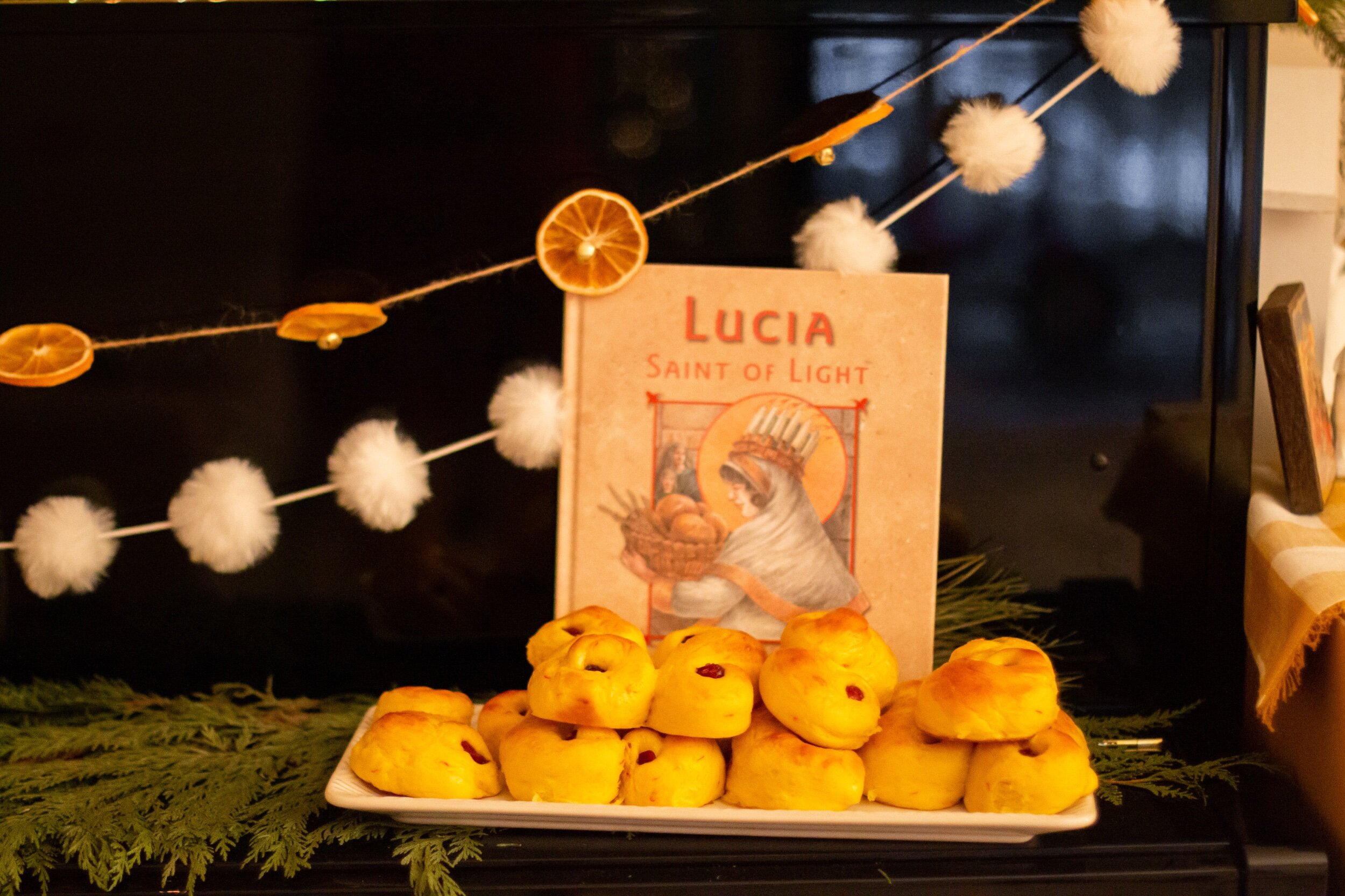

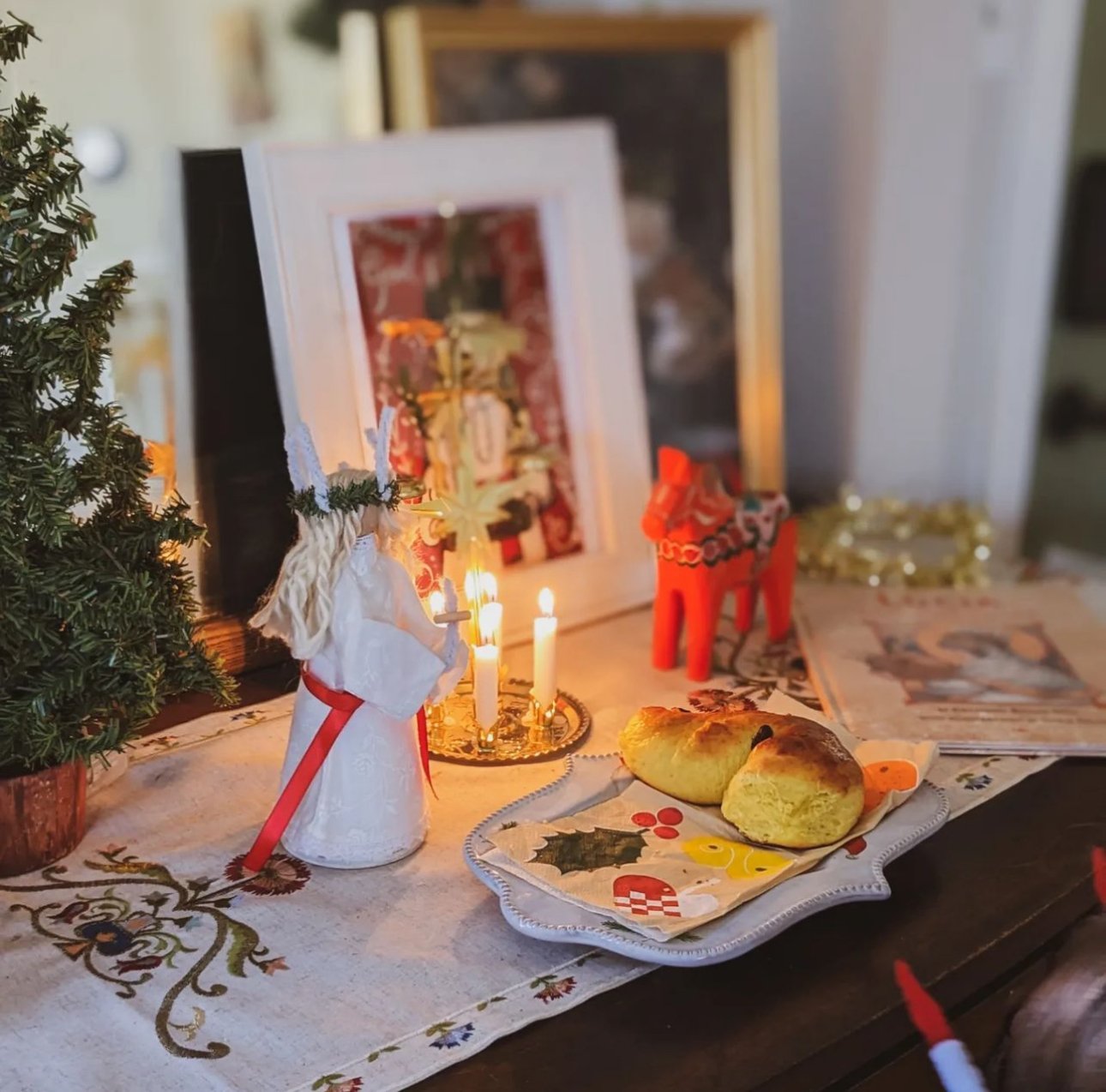




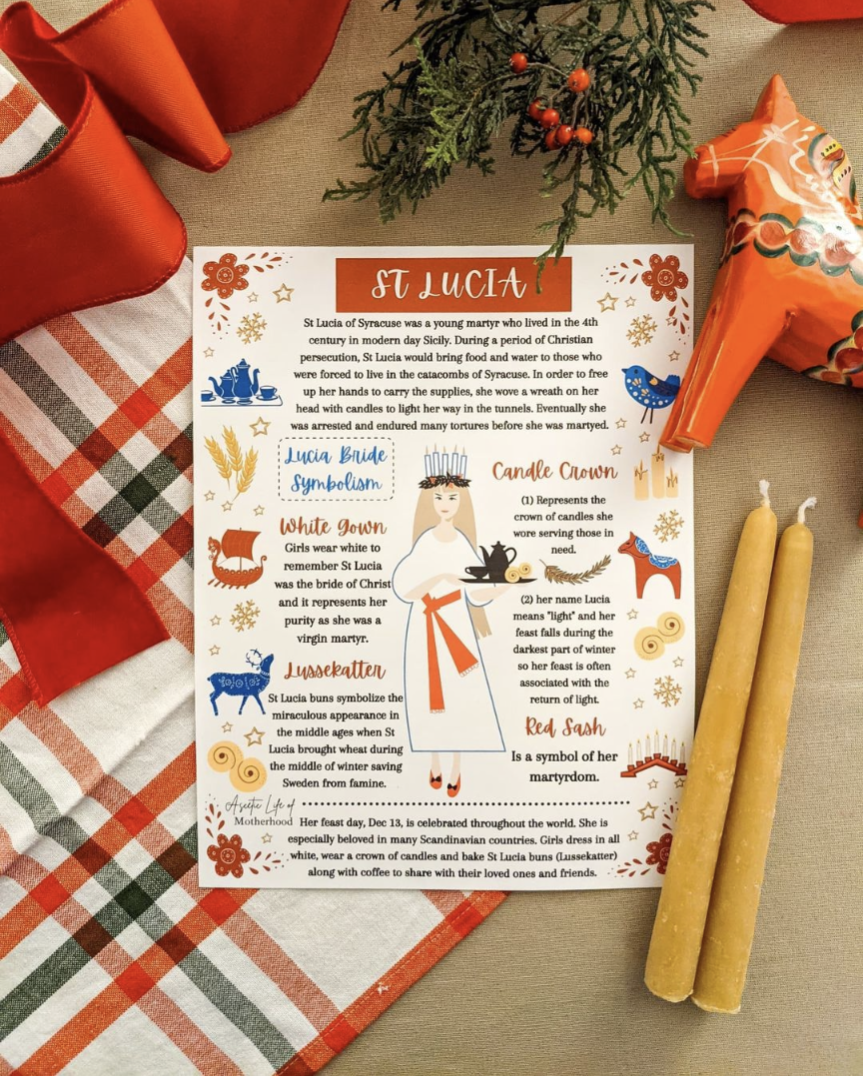
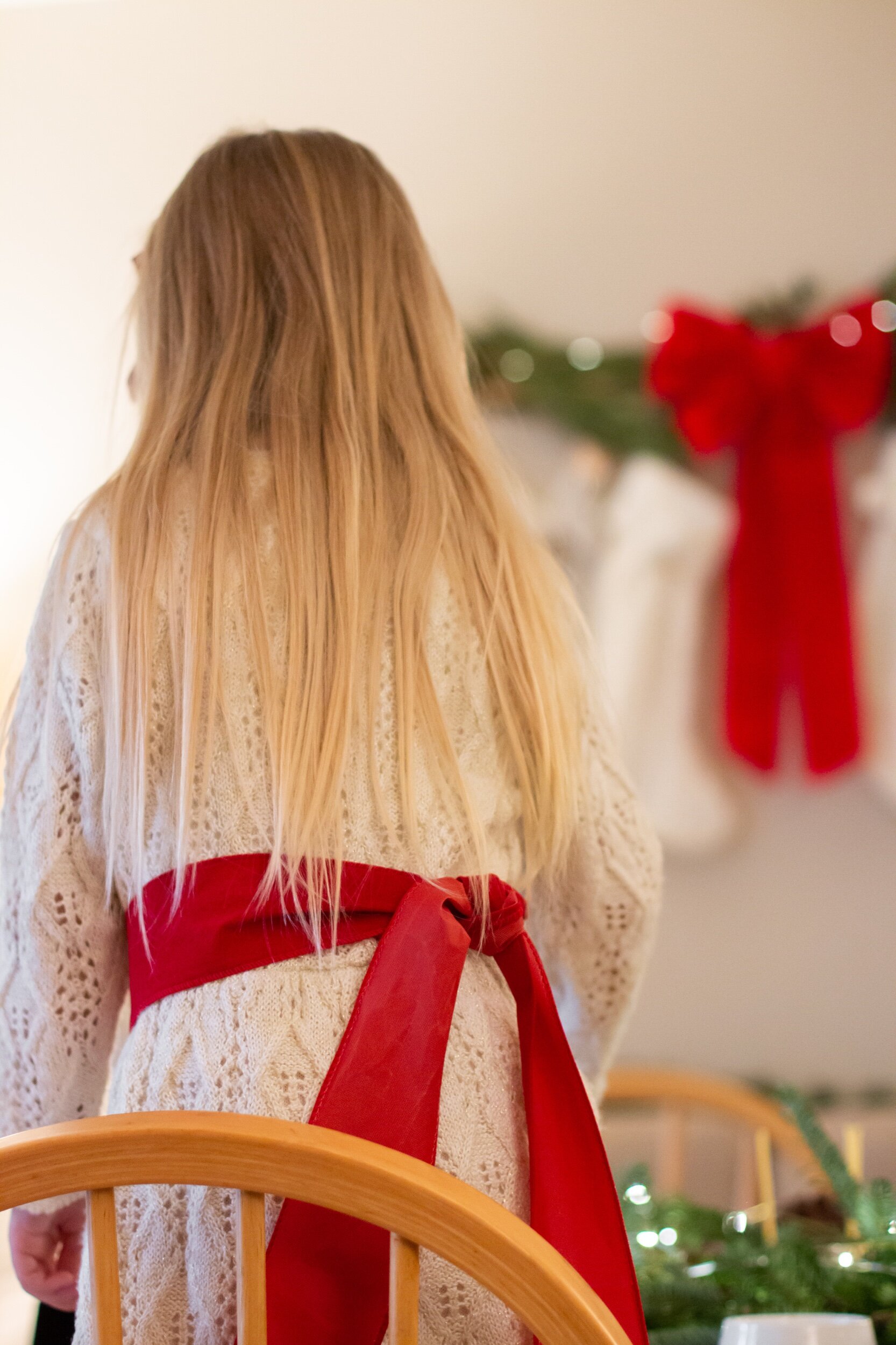










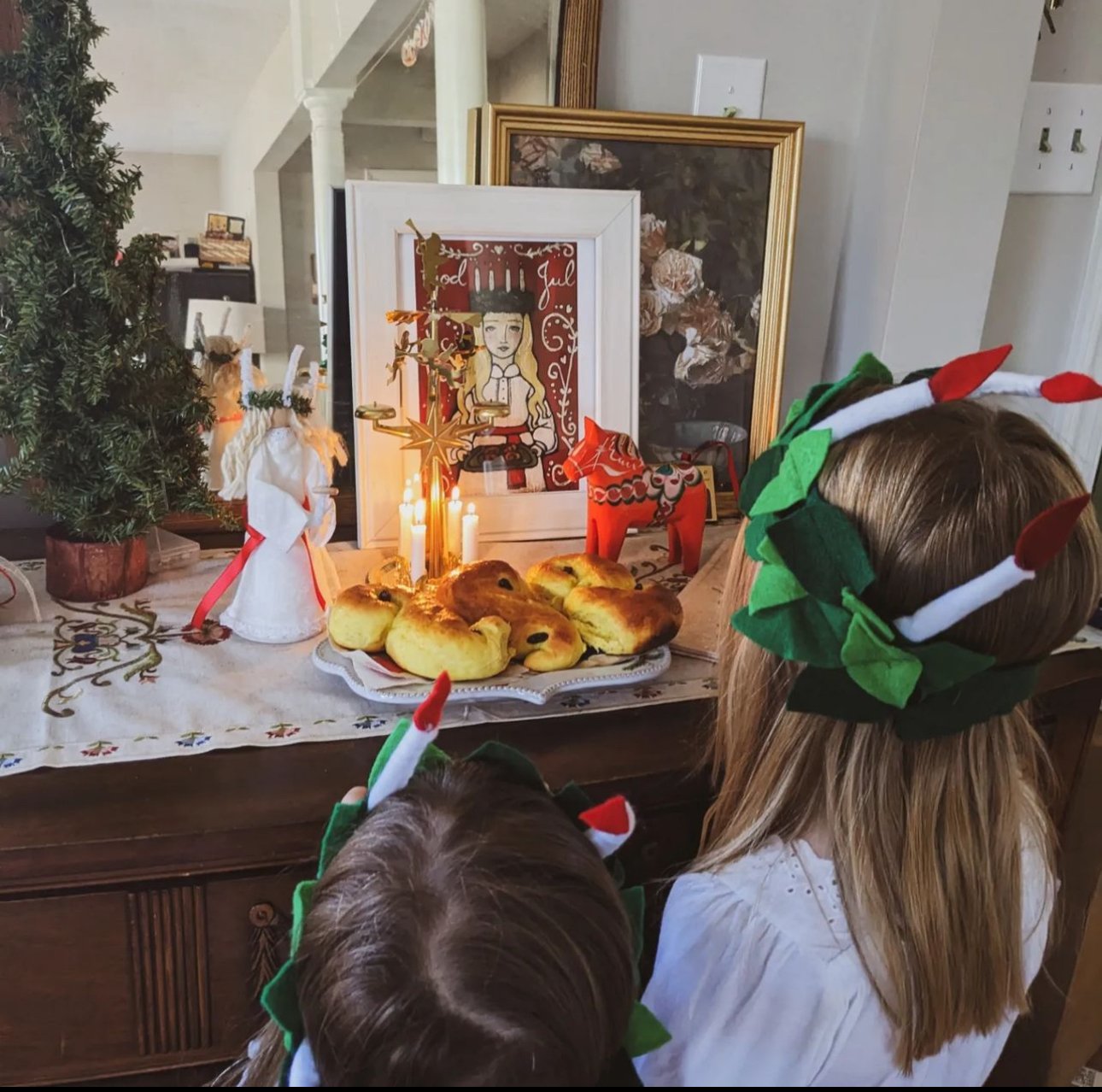




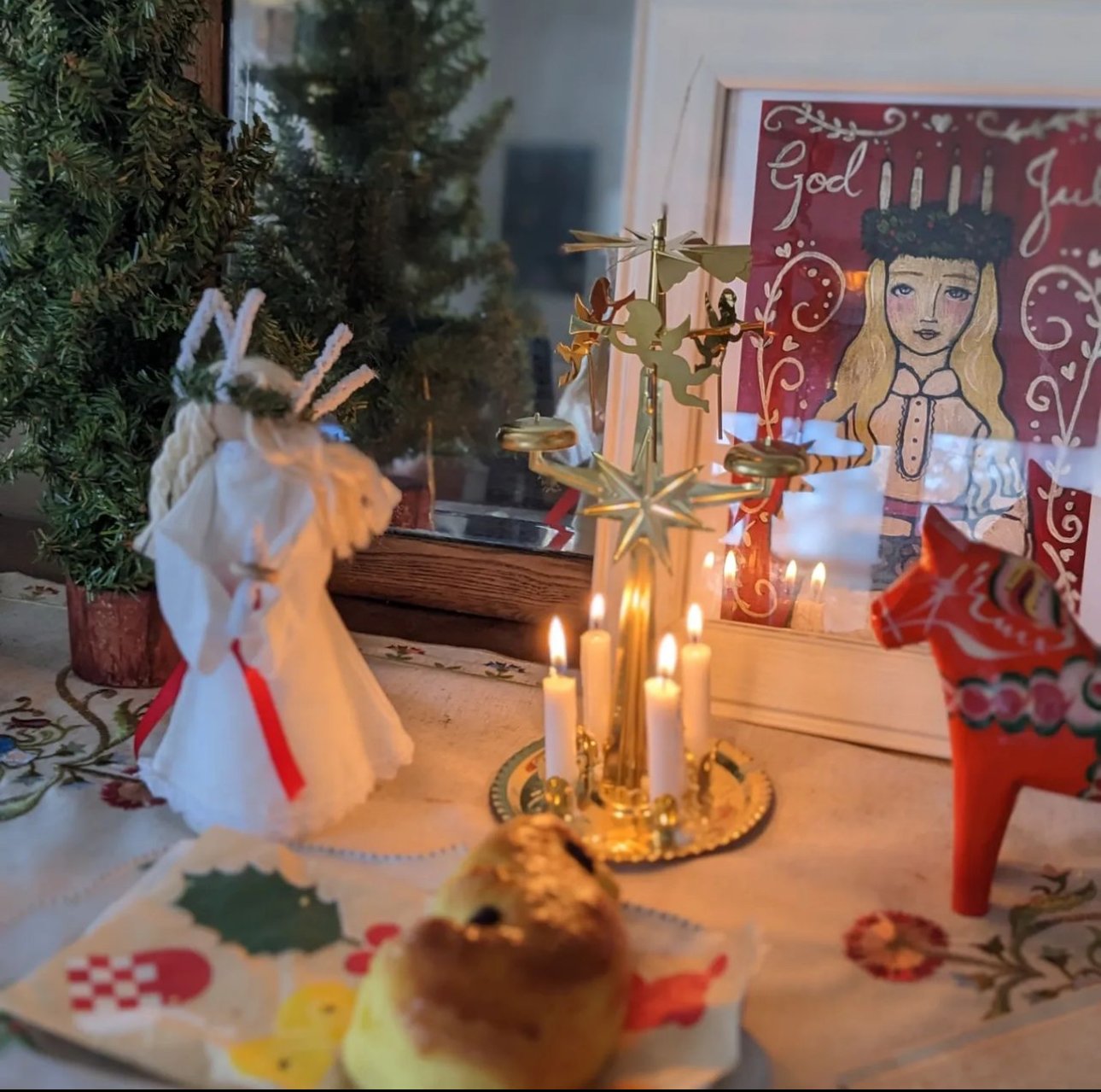


















If you’re new to creating a Pascha basket, welcome! I’m glad you found this little blogpost. My hope is to share an example of a Traditional Pascha basket, which stems from the Russian tradition, and share what each item symbolizes.